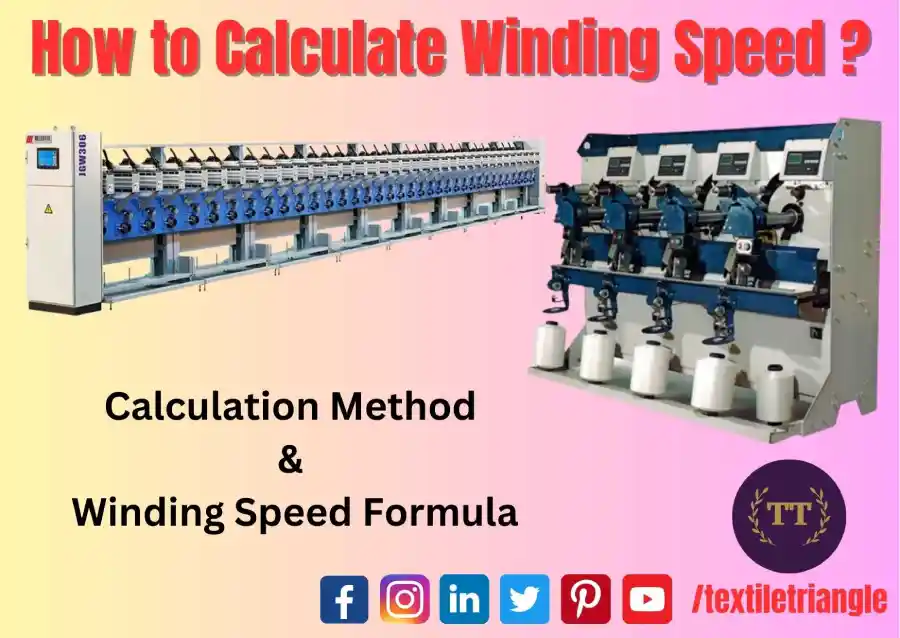Table of Contents
Introduction
The grooved drum winding system is a common type of winding system used in the textile industry to wind yarn onto packages. The winding speed is an important parameter that affects the quality and productivity of the winding process. In this lab manual, we will calculate the winding speed on a grooved drum winding system and study the anti-patterning system incorporated to it.
Equipment and Materials Needed
- Grooved drum winding machine
- Yarn
- Tachometer
- Calculator
- Safety equipment (such as gloves, safety glasses, and a lab coat)
Procedure
- Safety Precautions: Before starting the experiment, ensure that you are wearing all necessary safety equipment, including gloves, safety glasses, and a lab coat.
- Familiarize with the Grooved Drum Winding Machine: Familiarize yourself with the various components of the grooved drum winding machine, including the anti-patterning system.
- Prepare the Grooved Drum Winding Machine: Load the yarn onto the grooved drum winding machine and thread the yarn through the various components, including the anti-patterning system.
- Measure the Diameter of the Package: Use a caliper to measure the diameter of the package being wound.
- Measure the Rotational Speed of the Drum: Use a tachometer to measure the rotational speed of the drum. Note the units used (e.g., revolutions per minute).
- Calculate the Winding Speed: Use the formula below to calculate the winding speed on the grooved drum winding system:
Winding speed = (drum speed x π x drum diameter) / 1000
where:
- Drum speed is the rotational speed of the drum in revolutions per minute.
- π is the mathematical constant pi (approximately 3.14).
- Drum diameter is the diameter of the drum in millimeters.
- 1000 is a conversion factor to convert the result to meters per minute.
- Study the Anti-Patterning System: Observe the anti-patterning system in action and note how it works to prevent patterning on the package.
- Record Observations: Record any observations made during the experiment, including the winding speed and any observations of the anti-patterning system.
- Analyze the Results: After completing the experiment, analyze the results and note any observations or conclusions that you can draw from the experiment.
Conclusion
The winding speed is an important parameter that affects the quality and productivity of the winding process. By understanding how to calculate the winding speed on a grooved drum winding system and studying the anti-patterning system incorporated to it, we can ensure that the winding process is efficient and produces high-quality packages. Through this lab manual, you should have gained a better understanding of how to calculate the winding speed on a grooved drum winding system and study the anti-patterning system incorporated to it.
Frequently Asked Questions | FAQs
How do you calculate winding speed ?
Winding speed is typically calculated by dividing the length of the wound material by the time taken to wind it. The formula for winding speed is:
Winding Speed = Length of Wound Material / Time Taken to Wind
The resulting value is typically expressed in units such as meters per minute (m/min) or feet per minute (ft/min).
What is the speed of a yarn winding machine?
The speed of a yarn winding machine can vary depending on various factors such as the type of machine, yarn thickness, and desired output. However, yarn winding machines generally operate at speeds ranging from a few hundred meters per minute (m/min) to several thousand meters per minute.
What is the principle of winding?
The principle of winding involves transferring a continuous material, such as yarn, wire, or thread, from one source to a receiving package or spool. This is typically achieved by rotating the receiving package while controlling the tension and alignment of the material being wound. The goal is to create a tightly wound, evenly distributed package with minimal tension variations. Winding machines use various mechanisms, such as rotating drums, spindles, or cones, along with tension control systems, to achieve efficient and precise winding.
What is winding in textile?
In textile manufacturing, winding refers to the process of transferring yarn or thread from a larger package, such as a cone or bobbin, onto a smaller package, such as a spool or bobbin. It is a critical step that prepares the yarn for subsequent processes like weaving, knitting, or sewing. Winding ensures the yarn is properly tensioned, evenly distributed, and ready for use in downstream operations. The winding process may involve controlling the tension, alignment, and speed of the yarn to achieve high-quality and consistent results.
What is formula of Winding Efficiency ?
The winding efficiency formula is used to calculate the efficiency of a winding process. It is typically expressed as a percentage and is calculated using the following formula:
Winding Efficiency = (Length of Wound Material / Length of Yarn Used) * 100
In this formula, the length of the wound material refers to the actual length of yarn wound onto the package during the winding process. The length of yarn used refers to the theoretical length of yarn that should have been consumed based on the winding parameters and the desired package density.
By calculating the winding efficiency, textile manufacturers can assess the effectiveness of their winding process in terms of minimizing yarn wastage and achieving the desired package density.

